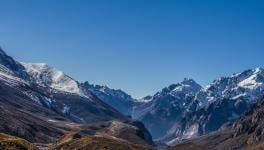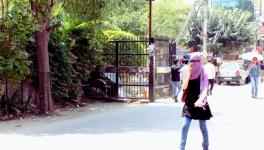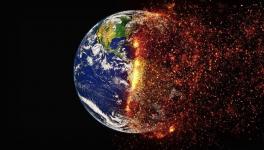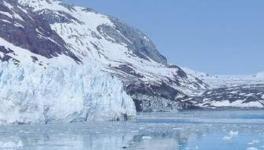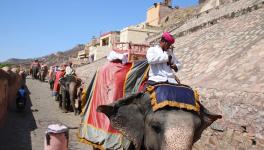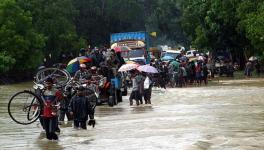‘People Living on Mountains are Considered Expendable’—Dr Ravi Chopra
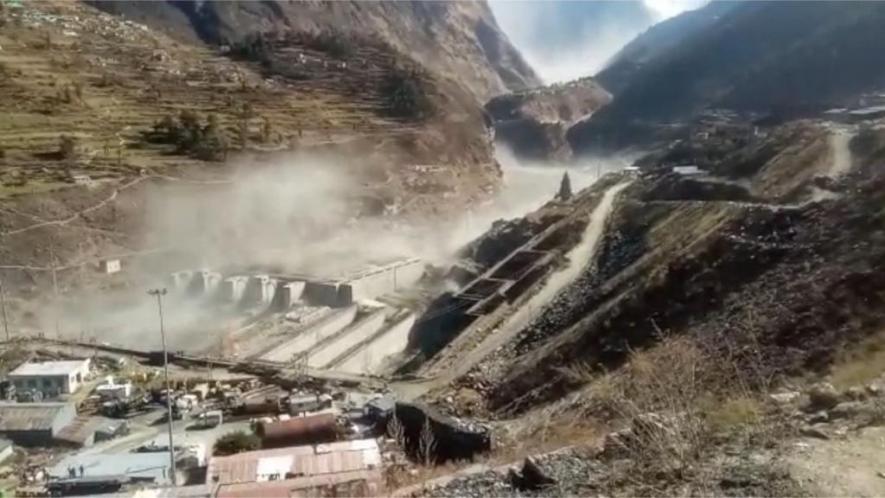
Image Courtesy: Down to Earth
After the disaster in Kedarnath in 2013, the Supreme Court had ruled that no new hydroelectric power projects can be set up in Uttarakhand, where around 25 projects had been given the go-ahead. Following this order, a committee headed by Dr. Ravi Chopra, director of the Doon-based People’s Science Institute, submitted a detailed report that warned that hydro-projects close to the paraglacial zone are extremely vulnerable. He recommended that 23 of 24 projects, including those still under construction, should be cancelled.
Dr. Chopra’s warnings have proved prophetic as indeed have repeated warnings issued by several environmentalists. But the state and central government chose to ignore his warnings. Despite the new disaster in Chamoli, the state now seems determined to return to business as usual in the Upper Himalayas, where natural calamities occur with frightening regularity and the topography is fragile. Edited excerpts of an interview with Rashme Sehgal.
We have a situation where successive governments never stop to question a destructive “development” paradigm instead of a constructive approach...
I agree. The developmental model adopted by Uttarakhand is the same model that has been adopted everywhere else. No state has made any attempt to deviate from this model. During the struggle for statehood for Uttarakhand, people here had insisted they would adopt a different model. Time and again, there have been warnings that this kind of development model is not working. We need to look at more sustainable patterns of development to avoid such disasters.
Why is the change not made?
The development model that is being pursued pursues economic growth at a certain rate. To achieve this rate, we have to exploit natural resources. These resources are un-priced. There is no price for running water or for trees and forests that are cut down. The economic growth model scales the growth of natural wealth at a desired rate. This rate is arrived at by the rate of output and the price of input. The government manages the price of input which includes the cost of labour and of natural resources. So, the aim is to manage the denominator rather than the numerator. Natural resources are priced at the lowest rates.
The government’s attitude is, well, if we are cutting trees in one place, we are growing them at another place. The government believes that by keeping the denominator low, we will get a higher rate of return. Look at the amount of devastation caused by thermal power, but the government insists they need it. These are [the kind of] decisions which governments take. Look how much they have whittled down the environment laws and their application.
On the Char Dham road, the High Powered Committee (HPC) headed by you had recommended the width of the road to be between 5.5 and 7 metre, while the Ministry of Defence wants it to be between 8 to 10 metres. Why is MoD being so inflexible over one metre?
This is not a question of one metre. The Ministry of Surface Transport had recommended in 2012 that a ten-metre road with tarred surface be constructed in the Himalayas. In 2018, they issued a revised notification based on experience of revised construction methods that the road should be of 5.5 metres with a black top width. This, incidentally, is a double lane road.
They went back on this and the Ministry of Road Transport issued another notification that the requirement was for a ten-metre road which was in violation of their earlier notification.
The Ministry of Defence had also submitted an affidavit in court suggesting [that] a seven-metre black top road was adequate for defence purposes. But when one says ‘seven-metre road’, then on the mountain side we have to leave space for a protection wall and a drain, while on the valley side we need to make crash barriers. Therefore, for a seven-metre black top surface road, we will have to cut ten metres [of mountain]. If the mountain slope is sharper, we have to cut [even more.
A ten-metre black top surface means we have to cut fourteen metres. For every metre increase in black top road width, the actual road cutting increases by a few metres.
But the MoD insists road widening is a must for the country’s security.
The Ministry of Defence has been brought in as a shield. No one will argue with the Ministry of Defence. They had also submitted an affidavit that a seven-metre black top width is necessary. There is no scientific validation for demanding ten metres.
How did the scientists who are members of the HPC agree to this demand?
Fifteen of the 26 members on the HPC are serving government officials. In fact, 13 belong to Uttarakhand and will go along with whatever the government says. Six of the scientists on the HPC work in government institutions. They chose to go along with the government’s viewpoint thereby ignoring their own observations, contained in the July 2020 report.
You have pointed out that blasting, slope-cutting, deforestation, tunnelling, damming of rivers, excessive tourism and so on, are causing massive disturbances to this ecosystem. Their cumulative effect on glaciers must be taken seriously?
The impact of a development project on glaciers will depend on its distance from the glacier. Activities such as blasting will destabilise mountain slopes but does not directly impact glaciers. Cutting forests does have a cumulative impact and can impact glaciers. Much of this has not been studied and therefore it is difficult to draw firm conclusions. Preliminary data is showing that massive pollution in the plains has this polluted air reach the glaciers.
After 1947, the Terai jungles were cut to resettle refugees. This was done innocently, but it did have an impact and [we] saw pollution levels rise across these mountains.
Rising pollution is one of the causes that increases the rate of melting of glaciers and can lead to recession of these glaciers. But glaciers are known to recede and then advance. These cumulative impacts need long-term studies.
I would like to emphasise that construction in paraglacial zones is fraught with dangers because when the glacier recedes, it leaves behind debris comprising boulders and rocks. Following heavy rainfall or snowfall, the melting of snow, ice and water is able to gather the solids lying in its path as it moves downstream to deadly effect.
The Rishiganga power project produces only 13.2 MW of power. In retrospect, was it worth it to have a power project in this fragile zone that is well within the Nanda Devi biosphere?
The Rishiganga project used to generate 13.2 MW of power which is quite a lot. When the Nanda Devi biosphere reserve was created, it had a “core” zone and a “buffer” zone. Local people were prevented from going there to collect firewood. Regular patrolling used to take place in this area yet you allowed three projects to be built right inside the core zone. One is a 70 MW project and another is a 35 MW project.
Do these disasters end up polluting our rivers downstream? So much debris from these power stations will be flowing downstream?
The debris will largely settle in the hill region. Over two hundred lives have been lost. The benefit from these hydro projects flows to people living in the plains. Those living on the mountains are expendable while those on the plains are not.
There is also a question mark about why early-warning systems were not in place given that there is an eight-kilometre distance between Rishiganga and the Tapovan power stations.
I would like to make two points. Firstly, there are all kinds of natural warning systems which are ignored. Now, about early-warning systems, there has to be a commitment to put them in place and then use them. This is not the case. Basic safety norms are overlooked. I will give you an example. I was asked to go and investigate a hydel power project where they had to keep a record of how much water was flowing in the river on an hourly basis. When I asked them to show me their records, I found they had all been fudged. They were using the same ink, the same handwriting to record the river’s ebb and flow. One cannot have the same individual recording the flow day in and day out, hour after hour. There has to be a commitment and a will to save lives. That is missing.
Get the latest reports & analysis with people's perspective on Protests, movements & deep analytical videos, discussions of the current affairs in your Telegram app. Subscribe to NewsClick's Telegram channel & get Real-Time updates on stories, as they get published on our website.













